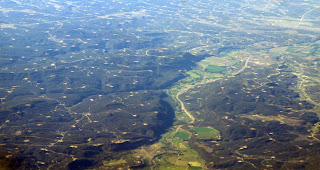August 16, 2016
By Ramon Alvarez
Look up in New Mexico (click here) and on most days you’ll see the unmistakably vast blue skies that make the Southwest region so unique.
But there’s also something hovering over the Four Corners region that a naked eye can’t detect: A 2,500-square mile cloud of methane, the highest concentration of the heat-trapping pollution anywhere in the United States. The Delaware-sized hot spot was first reported in a study by NASA scientists two years ago.
At the time, researchers were confident the cloud was associated with fossil fuels, but unsure of the precise sources. Was it coming from the region’s sprawling, naturally occurring coal beds or from a leaky oil and gas industry?
Now a NASA-led team has published a paper in a top scientific journal that provides some answers. Many of the highest-emitting sources are associated with the region’s oil and gas production and distribution.
And that’s actually good news – because we know the leaks in these wells can be located and plugged with relative ease, and without adding significant costs to the industry. This, in turn, means we can make a big dent in the methane cloud....
So, get 'er done!
August 15, 2016
The Four Corners region of New Mexico and Colorado. Numerous light-colored spots are sites of gas and oil development.
In an extensive airborne survey, (click here) a NASA-led team has analyzed a previously identified "hot spot" of methane emissions in the Four Corners region of the United States, quantifying both its overall magnitude and the magnitudes of its sources. The study finds that just 10 percent of the individual methane sources are contributing half of the emissions.
Scientists from NASA's Jet Propulsion Laboratory and Caltech, both in Pasadena, California; the National Oceanic and Atmospheric Administration (NOAA), Boulder, Colorado; and the University of Michigan, Ann Arbor, used two JPL airborne spectrometers to identify and measure more than 250 individual sources of methane. The sources emitted the gas at rates ranging from a few pounds to 11,000 pounds (5,000 kilograms) per hour. Results are published this week in the Proceedings of the National Academy of Sciences in a paper titled "Airborne methane remote measurements reveal heavy-tail flux distribution in Four Corners region." Christian Frankenberg of JPL and Caltech is the lead author....

